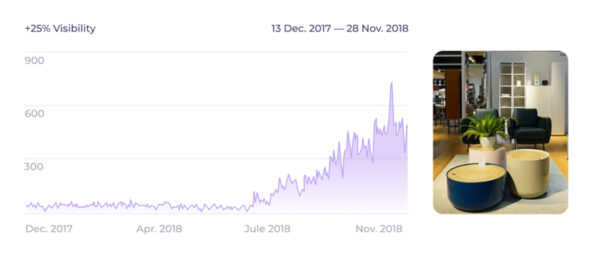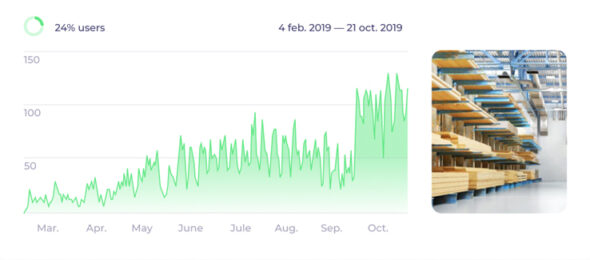How we improved site visibility by 3 times in 6 months – promotion case of the greenhouse installation company.
We increased the visibility from 20.47% to 59.35% in Moscow and the region:

Compared with the same period, the traffic almost doubled – from 31418 to 51264 visits:
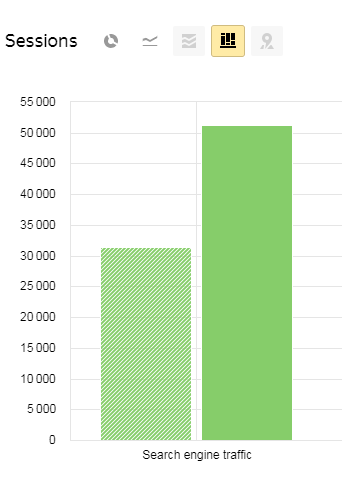
More:

We could continue to improve these indicators, if it were not for one “but”… What is it? You’ll find out below!
How it was achieved
Removed broken links and redirects
We parsed the site in Screaming Frog, found broken links, prepared technical assignments for the programmer and commenced the project. Among them were also some broken redirects, when the final address gave a 404 response from the server. All of this was preventing the robot from properly navigating the site.
Most of the broken links appeared because the client simply removed products from the site. We suggested two solutions:
- Remove broken inbound links.
- Set up redirects to the parent section.
We settled on the first option, so the following worksheet was prepared for the programmer.
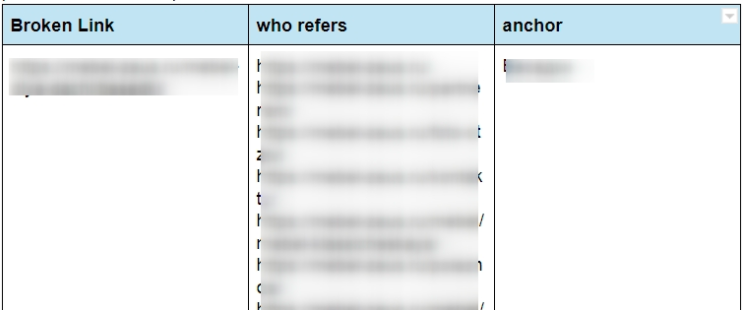
Optimized internal linking
Some pages could not be accessed simply by clicking links. This is a major usability flaw for users and search robots. We decided to actively use contextual links to better distribute link weight within the site.
We tested 2 frameworks:
1. Circular linking. When all pages of the same level are linked to each other. Each linked to two neighboring pages in order to make sure that the structure doesn’t break if one page is removed. And all the pages of the subsection had to link to the parent section, because it is the most important one. Here is what it looks like:
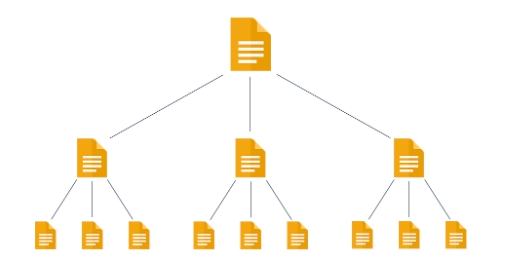
2. Strengthening internal weight on the most relevant pages. We chose pages that the search engine determined to be the most relevant and fueled them with links from other pages. This worked well for moving pages from the top 11-20 to the top 10. Not as well – from the top 5-10 to the top 1-5. We did not have access to the admin panel, so we had to prepare technical assignments for their programmer.
Worked through the snippets
Some descriptions were completely empty, others were unattractive. Titles most often duplicated h1 and were made without taking keywords into account. Worked through all of this based on the collected and clustered semantics. Tested emojis in the descriptions to increase clickability and used a direct call to action.
By optimizing the titles according to the necessary keywords, managed to move up the position.
And by improving the descriptions, we managed to increase the average CTR and clickability in search results. Here you can see that even with a decrease in the number of impressions CTR remained at the same level, and in some places – increased:
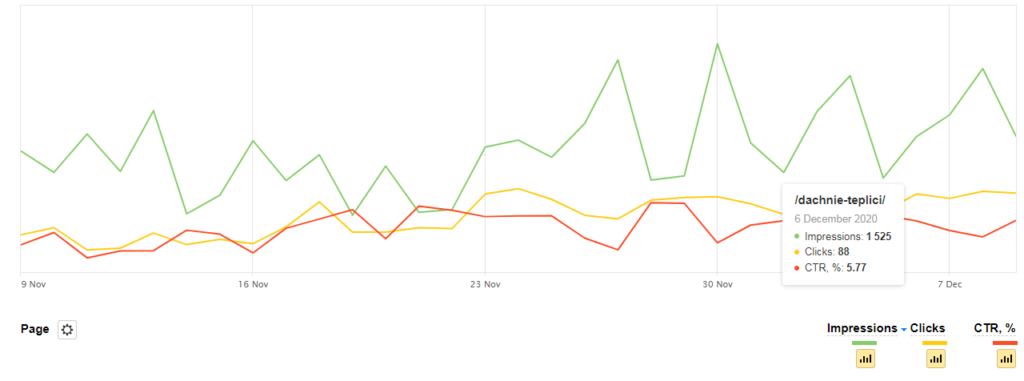
Refined optimization of problematic clusters and improved LSI eligibility
Pages with bad positions throughout the cluster were checked for over-optimization and under-optimization. We added the stylistics check to reduce verbosity, cliches. We looked at the ratio of text volume to the total number of keywords and search cues.
All this improved the quality of optimization and increased LSI-eligibility of the text. Additionally, well-developed clusters were strengthened by linking from relevant pages. Positions gradually went up.
Worked on pages that lost traffic
We noticed in that there were pages on the site which used to attract a lot of users, but then stopped. We collected semantics for them anew, optimized them for the right keywords, worked through the missed phrases. This is how the traffic dynamics has changed based on one of the pages we have worked on:
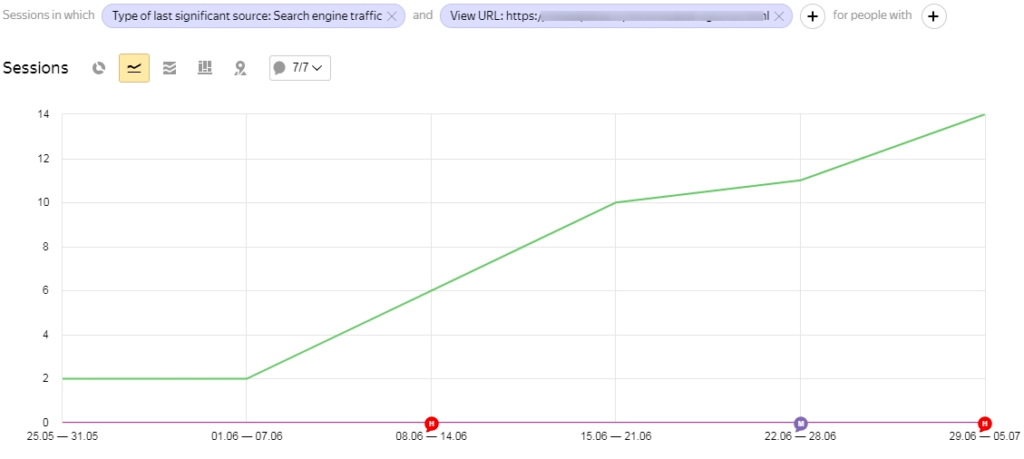
Activated external factors
To improve external factors, we created a channel on Yandex.Zen. Its objective is to form the status of an expert company, improve behavioral factors, and increase the level of trust. Another aim is building up link volume. The result is not only good links, but also an additional channel for attracting traffic to the main site. This is what the dynamics of conversions from Yandex.Zen to the site look like:
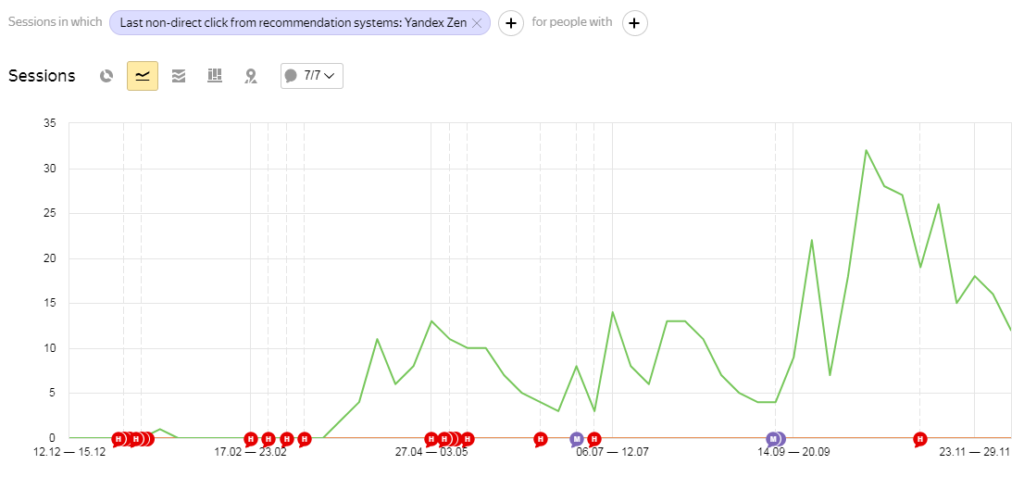
That one “BUT”…
All the changes were implemented on the customer’s side, because we did not have access to the admin panel. It complicated the process:
- Because it took a lot of time to create detailed recommendations describing the smallest details. We would have done it faster ourselves.
- Because only 40 % of our recommendations were implemented. It’s unclear why.
As a result, a very promising project with great potential is showing the results of a mediocre one.
